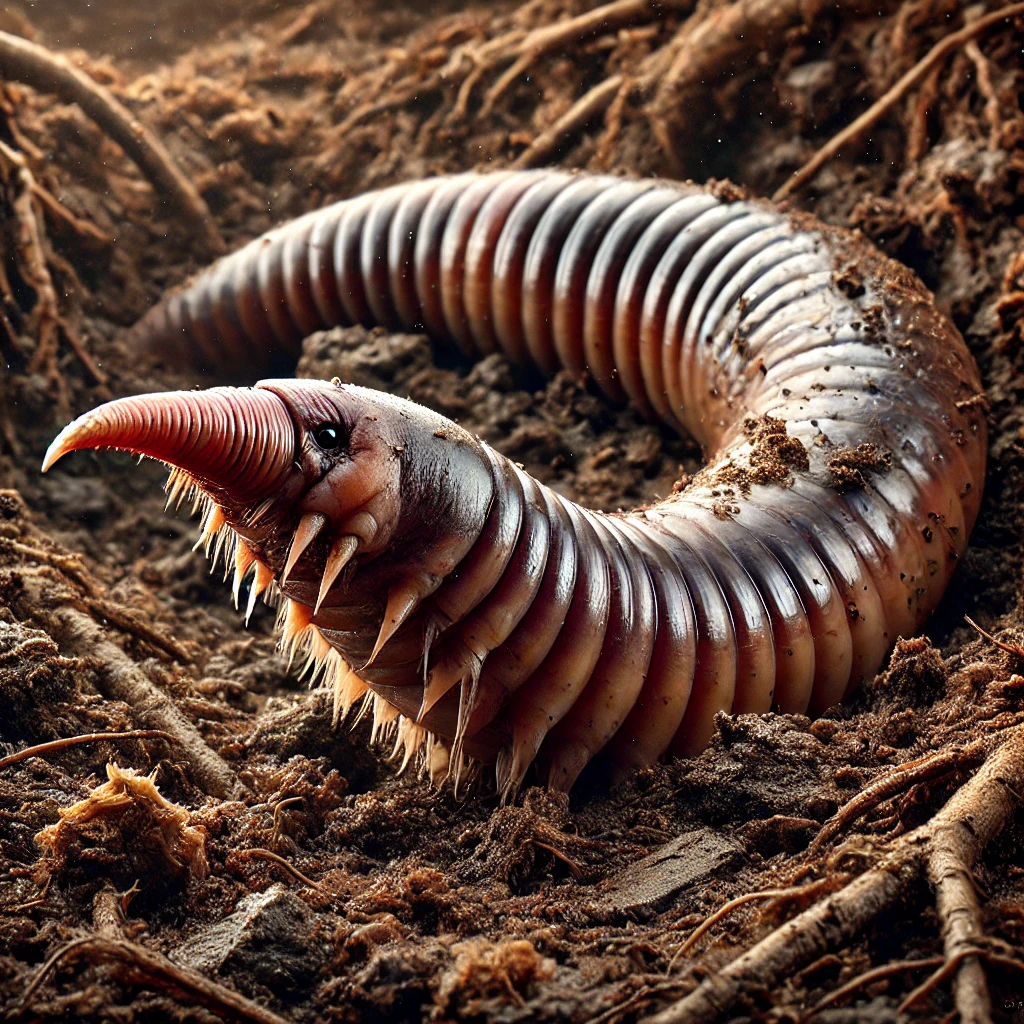Taxonomy:
- Kingdom: Animalia
- Phylum: Annelida
- Class: Clitellata
- Order: Haplotaxida
- Family: Lumbricidae
- Genus: Vermis
- Species: V. rostratus
Description:
Vermis rostratus, commonly known as the Beaked Worm, is a large, robust species of worm indigenous to the nutrient-rich soils of the British Columbia Sector Overview A Sector, commonly referred to as a Provincial Sector, is a designated area of space within the broader and diverse cosmic region known as the Canadian Expanse. These Sectors function similarly to provinces, contributing to the organization and governance of this vast territory. Structure and Division The Canadian Expanse is divided into thirteen Provincial Sectors, each with its own... More and the Nunavut Sector
Overview A Sector, commonly referred to as a Provincial Sector, is a designated area of space within the broader and diverse cosmic region known as the Canadian Expanse. These Sectors function similarly to provinces, contributing to the organization and governance of this vast territory. Structure and Division The Canadian Expanse is divided into thirteen Provincial Sectors, each with its own... More and the Nunavut Sector Overview A Sector, commonly referred to as a Provincial Sector, is a designated area of space within the broader and diverse cosmic region known as the Canadian Expanse. These Sectors function similarly to provinces, contributing to the organization and governance of this vast territory. Structure and Division The Canadian Expanse is divided into thirteen Provincial Sectors, each with its own... More. Unlike its Earth counterparts, the Beaked Worm possesses several distinctive features that set it apart.
Overview A Sector, commonly referred to as a Provincial Sector, is a designated area of space within the broader and diverse cosmic region known as the Canadian Expanse. These Sectors function similarly to provinces, contributing to the organization and governance of this vast territory. Structure and Division The Canadian Expanse is divided into thirteen Provincial Sectors, each with its own... More. Unlike its Earth counterparts, the Beaked Worm possesses several distinctive features that set it apart.
- Size: Beaked Worms are significantly larger than Earth earthworms, typically reaching lengths of up to 2 meters and diameters of about 10 centimeters.
- Body: The body of the Beaked Worm is segmented and covered in a moist, slimy cuticle that aids in movement through soil. Its coloration ranges from dark brown to reddish hues, providing camouflage within its natural habitat.
- Beak: The most distinctive feature of the Beaked Worm is its sharp, chitinous beak located at the anterior end. This beak is used for burrowing through soil and organic matter and can deliver a defensive bite if the worm feels threatened.
- Sensory Organs: Although the Beaked Worm lacks eyes, it has highly developed chemoreceptors and tactile organs that help it navigate its environment and locate food sources.
Habitat and Behavior:
Vermis rostratus thrives in the deep, fertile soils of forests and plains in its native sectors. It plays a crucial role in soil aeration and nutrient cycling, much like its Earth relatives but on a larger scale.
- Diet: The Beaked Worm feeds on decaying organic matter, breaking it down into nutrient-rich compost. This process enriches the soil and supports plant growth.
- Behavior: Typically solitary, Beaked Worms are most active during the night when they burrow through the soil in search of food. They are known to be aggressive if handled, using their beak to deliver a painful bite as a defense mechanism.
Ecological Importance:
The casings produced by the Beaked Worm are highly valued for their rich nutrient content. These castings enhance soil fertility and structure, making them a sought-after resource for agricultural and gardening purposes.
- Soil Enrichment: The nutrient-rich compost created by the Beaked Worm’s digestive process supports robust plant growth and enhances soil health.
- Ecosystem Role: As decomposers, Beaked Worms contribute significantly to the breakdown of organic matter, promoting nutrient cycling and supporting diverse plant and animal communities.
Human Interaction:
Due to their size and defensive nature, Beaked Worms are not typically kept as pets or handled frequently. However, their castings are harvested and used in agriculture to improve soil quality.
- Agriculture: Farmers and gardeners collect Beaked Worm castings to use as natural fertilizer, leveraging the worm’s natural composting abilities to enhance crop yields.
- Caution: It is advised to handle Beaked Worms with care and to wear protective gloves to avoid bites.
Conservation Status:
The Beaked Worm is currently not endangered. However, habitat preservation is essential to maintain healthy populations and ensure the continued availability of their beneficial soil-enhancing activities.
Research and Studies:
Ongoing research focuses on the Beaked Worm’s role in soil ecology, its potential applications in sustainable agriculture, and understanding its unique biological adaptations.
References:
- Thompson, L. M., & Harris, P. (2024). The Role of Vermis rostratus in Soil Fertility. Journal of Soil Ecology, 19(2), 115-130.
- Green, T. W. (2025). Nutrient Cycling and Decomposition by Beaked Worms. Agricultural Science Quarterly, 27(3), 204-220.
- Silva, R. E., & Patel, J. D. (2023). Behavioral Study of the Beaked Worm. Annals of Annelid Research, 15(1), 89-105.

